The overall objective of the CoolDown project is to collect and validate suitable measures for the rapid and practicable transformation of heating networks with a focus on the secondary side and (existing) buildings. To this end, the technical, regulatory and economic requirements will be identified and evaluated in detail.
more infoProjects and References
-
-
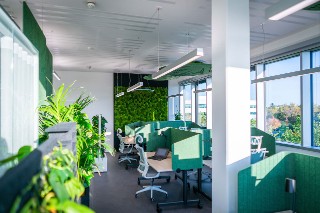
Sustainable acoustic and visual privacy at office workplaces.
At present, there is a high vacancy rate in office buildings due to people working remotely. This is a major economic and ecological problem: air-conditioned, illuminated office space stands empty while people work from home in less energy-efficient living spaces. For offices to be used, they must offer employees clear advantages. The classic multi-space concept, an open-plan office with various workplace modules, still leaves a lot to be desired, especially when it comes to privacy.
more info -
Acoustic panels are used to improve the acoustics in rooms with a high proportion of sound-reflecting surfaces. To make them look more attractive, the surface of these panels is covered with a slotted or micro-perforated wooden veneer. This regular surface design narrows the width of the absorption spectrum and impairs the high-quality, natural impression of the wood surface. In the present project, this technical problem is solved by a novel brushing process that opens the wood veneer along the grain, creating irregular holes.
more info -
In the GreenAcoustics project, a digital tool that takes a more comprehensive approach is to be designed and implemented as a prototype. The tool will be based on Fraunhofer IBP's existing reverberate technology, which uses not only the usual acoustic parameters, but also the shape of the room and the uneven distribution of absorbers in the room to calculate the reverberation time.
more info -
In the “Bassorber” project, a comprehensive calculation tool developed at IBP is used to accelerate and optimize the development of absorbers. The tool not only allows the absorption coefficients of almost all absorber structures to be optimized, but also the interaction between the absorbers.
more info -
In the Digital Room Acoustics Planning (DIGAKUST) project, a software solution is being developed that automatically calculates relevant key acoustic figures and makes them audible in a simulation environment in real time by transferring technical room parameters (e.g. size of the room, position of objects in the room, material properties of the surfaces). The aim is to provide users with an easy-to-use tool that captures interiors in great detail, automatically assigns object properties, allows the geometry of the room to be individually configured via an intuitive user interface, and makes it possible to experience the resulting changes in room acoustics in real time. Thus, the impact of structural or design changes on the overall acoustics becomes immediately apparent.
more info -
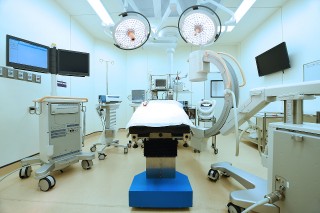
The project aims at developing a demonstrator that can be used in operating rooms
Propofol, an intravenously administered hypnotic, has outstanding advantages over commonly used inhalational anesthetics. It is effective against post-operative nausea, does not trigger malignant hyperthermia - a potentially fatal anesthesia complication - and is not a greenhouse gas. The main disadvantage of propofol, however, is that, unlike inhalational anesthetics, its drug concentration cannot be determined during anesthesia using any clinically applicable method. Photoacoustic spectroscopy is a highly promising approach for monitoring propofol in exhaled air in a clinically applicable way.
more info -
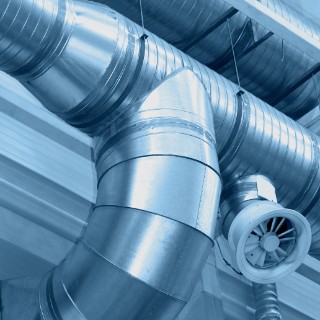
The project aims at reducing acoustic emissions from fans.
In the project “Acoustically optimized design of fan attachments and casings (ADVentAGe)”, hybrid active noise control systems are being developed and validated in collaboration with project partners. These can be integrated into fan casings or typical fan attachments such as inlet cones, protective grilles and diffusers to significantly reduce acoustic emissions from fans.
more info -
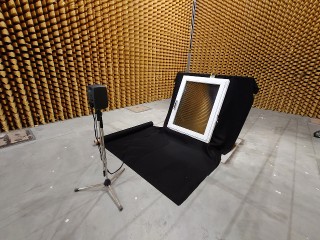
Window with integrated prototype of the intelligent External Air Vent (EAV).
Ventilation systems in the home must fulfill more and more requirements. In order to meet both energy and sound insulation requirements, an ever-increasing proportion of ventilation concepts have to be designed with fan-assisted systems. A fan-assisted exhaust air system in accordance with DIN 1946-6 is comparatively inexpensive and easy to install. With this system, the exhaust air is removed by fans in the rooms and replaced passively by an inflow of fresh air from external air vents (EAV). However, due to the increasingly airtight construction of new buildings, an ever-higher volume flow is needed. The high air flow means that sound insulation requirements cannot always be met. This is often particularly a problem in (inner) cities.
more info -
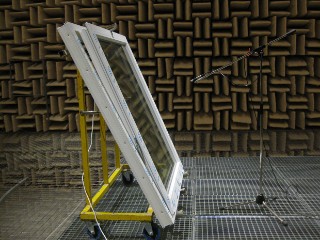
The latest innovation level is our smart window control, which, thanks to artificial intelligence, adapts to the preferences and needs of its users and automatically closes when it gets too noisy.
Whether at home, in a hotel or at work in the office, the problem is often the same: You want to open the window to air the room, but it is very loud outside. After a short time, you close the window again to avoid the noise. The solution: automatic windows that open when ventilation is required, as detected by sensors, yet also have an automatic closing function that is activated as soon as a certain noise level is reached outside the building. However, the development in the Sound Controlled Ventilation project goes beyond simple volume control. It can also filter sounds based on their type and include the indoor noise level in the decision-making process via a microphone installed in the room.
more info